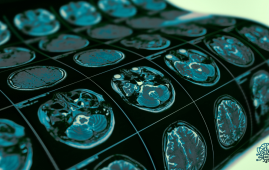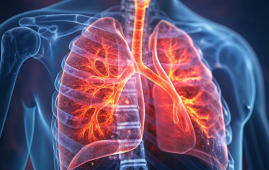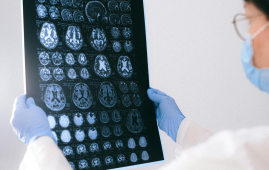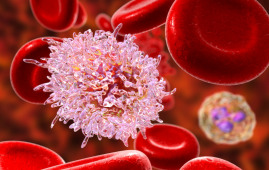

Protein requirements are elevated during pregnancy to support the many adaptations and high rates of protein synthesis to support fetal and maternal needs. Recent work using the indicator amino acid oxidation method has resulted in estimated average requirements higher than those currently recommended during early and late gestation. Although emphasis is placed on the indispensable amino acids, studies conducted using animals suggest requirements may be elevated for dispensable amino acids during gestation as well. In order to determine if dispensable amino acid requirements are elevated during gestation in humans, Rasmussen and colleagues conducted a study in healthy women late gestation.
Subjects in this study were pregnant women who consumed isocaloric diets containing 0.88 g.kg-1.d-1 of protein and a range of glycine (5-100 mg.kg-1.d-1) during midgestation (17 observations in 9 women) and late gestation (19 observations in 8 women). Oxidation of labeled phenylalanine was determined at baseline and at isotopic steady state, and plasma was collected to determine 5-oxoproline (an indicator of glycine availability).
Medical Foods: Their Role in Therapeutic Nutrition
Learn how medical foods are defined, their role in nutrition therapy, and how they are different from foods for special dietary uses. 1 CPE is available.
During midgestation, there were no significant responses observed. During late gestation, lower levels of glycine intake led to elevated oxidation of phenylalanine and higher levels of plasma 5-oxoproline. The breakpoint in the oxidation of phenylalanine was above 37 mg glycine.kg-1.d-1 and for 5-oxoproline it was above 27 mg glycine.kg-1.d-1. The authors concluded that glycine becomes conditionally indispensable during late gestation if protein intake is maintained at the current estimated average requirement of 0.88 g.kg-1.d-1.
In a commentary on this article, Matthews states this innovative study provides sufficient information to warrant future studies to validate the conclusion that glycine becomes conditionally indispensable in late gestation, and thus determine the correct the EAR and RDA of this amino acid.
more recommended stories
 Safer Allogeneic Stem Cell Transplants with Treg Therapy
Safer Allogeneic Stem Cell Transplants with Treg TherapyA new preclinical study from the.
 AI in Emergency Medicine and Clinician Decision Accuracy
AI in Emergency Medicine and Clinician Decision AccuracyEmergency teams rely on rapid, accurate.
 Innovative AI Boosts Epilepsy Seizure Prediction by 44%
Innovative AI Boosts Epilepsy Seizure Prediction by 44%Transforming Seizure Prediction in Epilepsy Seizure.
 Hypnosis Boosts NIV Tolerance in Respiratory Failure
Hypnosis Boosts NIV Tolerance in Respiratory FailureA New Approach: Hypnosis Improves NIV.
 Bee-Sting Microneedle Patch for Painless Drug Delivery
Bee-Sting Microneedle Patch for Painless Drug DeliveryMicroneedle Patch: A Pain-Free Alternative for.
 AI Reshapes Anticoagulation in Atrial Fibrillation Care
AI Reshapes Anticoagulation in Atrial Fibrillation CareUnderstanding the Challenge of Atrial Fibrillation.
 Hemoglobin as Brain Antioxidant in Neurodegenerative Disease
Hemoglobin as Brain Antioxidant in Neurodegenerative DiseaseUncovering the Brain’s Own Defense Against.
 Global Data Resource for Progressive MS Research (Multiple Sclerosis)
Global Data Resource for Progressive MS Research (Multiple Sclerosis)The International Progressive MS Alliance has.
 AI Diabetes Risk Detection: Early T2D Prediction
AI Diabetes Risk Detection: Early T2D PredictionA new frontier in early diabetes.
 Cancer Cells Learn to Self-Report: A New Frontier in Immunotherapy
Cancer Cells Learn to Self-Report: A New Frontier in ImmunotherapyHow a Drug Complex Enables Immune.

Leave a Comment